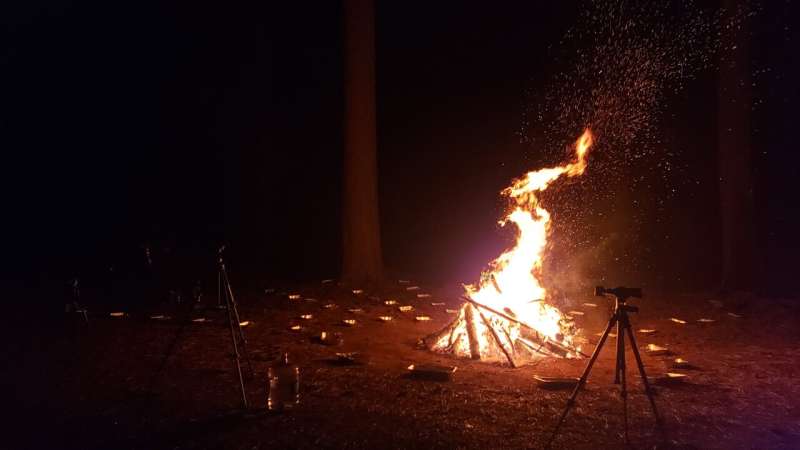Researchers at the University of California, Irvine have conducted groundbreaking field experiments to understand the physics behind the spread of wildfires through lofted embers. Their findings, published in Physics of Fluids, provide valuable insights that can help authorities better predict and mitigate the devastating impacts of these disasters in a warming climate.

Unlocking the Secrets of Firebrand Propagation
In the chaotic aftermath of a wildfire, researchers have been grappling with the complex interplay of heat, wind, flames, and fuel that gives rise to embers, or firebrands, which are then lofted into surrounding areas. These embers can ignite new spot fires, spreading destruction and property loss in the ever-expanding wildland-urban interface.
To unravel the mysteries of this fiery phenomenon, the UC Irvine team conducted first-of-their-kind field experiments at the UC Berkeley Blodgett Forest Research Station in California’s Sierra Nevada mountain range. By constructing a burn pile of ponderosa pine and Douglas fir materials, the researchers were able to simulate the primary fuel sources found in Sierra wildfires. Using high-speed imaging and particle tracking velocimetry techniques, they meticulously tracked the evolution of flames and the trajectories of the embers produced during the nighttime experiments.
Harnessing Advanced Instruments to Study Ember Dynamics
The researchers spread an array of sheet pans filled with water around the fire, allowing them to collect the cast-out firebrands for later analysis in the laboratory. By studying the size, shape, and density of these embers, the team gained valuable insights into their potential for igniting spot fires.
“Climate change is making wildfires larger and more complex,” said co-author Tirtha Banerjee, UC Irvine associate professor of civil and environmental engineering. “Our development patterns in the wildland-urban interface mean that these blazes are causing damage that’s directly impacting people living in these areas, both financially and in terms of personal safety.” The researchers’ findings challenge the assumptions made in current computer simulations, which often overlook the intermittency and unpredictability of ember generation and lofting within the fire plume.
Improving Risk Calculations for Spot Fire Ignition
“Present models can underestimate the potential for large firebrands to be lofted and transported greater distances due to simplifications that are being made about fire plumes and the shape of embers,” said lead author Alec Petersen, a UC Irvine postdoctoral scholar in civil and environmental engineering.
The researchers found that ember creation is highly intermittent, occurring in large bursts that can hurl fire-starting debris far from the source in a way that’s difficult to predict. “What gets ignored are events where bursts of relatively large embers are ejected simultaneously with strong, turbulent updrafts from the plume. These are the statistically rare events that could be responsible for lofting those embers with the most potential to light spot fires farther than one might otherwise predict,” Petersen explained.
By incorporating these insights into future modeling efforts, the scientists hope to provide authorities with more accurate risk calculations for where new fires might spring up, ultimately aiding in the prevention and mitigation of these devastating events.
